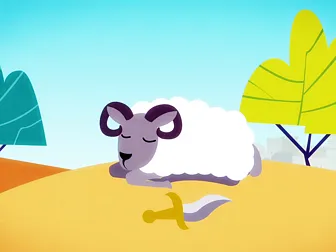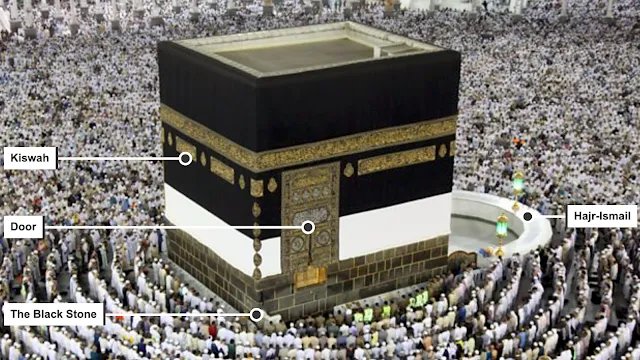The festival remembers the prophet Ibrahim's willingness to sacrifice his son when God ordered him to.
Eid ul-Adha ('Festival of Sacrifice') is one of the most important festivals in the Muslim calendar.
The festival remembers the prophet Ibrahim's willingness to sacrifice his son when Allah ordered him to.
When is Eid ul-Adha celebrated?
Eid ul-Adha is a public holiday in Muslim countries. In 2025, Eid ul-Adha will begin on the evening of Friday 6 June and end on the evening of Tuesday 10 June.
What is the story of Eid ul-Adha?
Eid ul-Adha celebrates the time when Ibrahim had a dream which he believed was a message from Allah asking him to sacrifice his son Isma'il as an act of obedience to Allah.
The devil tempted Ibrahim by saying he should disobey Allah and spare his son. As Ibrahim was about to kill his son, Allah stopped him and gave him a lamb to sacrifice instead.
This festival commemorates the ransom with a ram of the biblical patriarch Ibrāhīm’s (Abraham’s) son Ismāʿīl (Ishmael)—rather than Isaac, as in Judeo-Christian tradition.
How is Eid celebrated?
In some countries, Muslims sacrifice a sheep or goat (in Britain the animal is killed at a slaughter house). The meat is shared equally between family, friends and the poor.
Eid usually starts with Muslims going to the Mosque for prayers. They dress in their best clothes and thank Allah for all the blessings they have received.
It is a time when they visit family and friends.
Muslims will also give money to charity so that poor people can celebrate too.
Hajj
Muslims celebrate Eid ul-Adha on the last day of the Hajj. The Hajj is pilgrimage to Makkah in Saudi Arabia.
It occurs every year and is the Fifth Pillar of Islam (and therefore very important).
All Muslims who are fit and able to travel should make the visit to Makkah at least once in their lives.
During the Hajj the pilgrims perform acts of worship and renew their faith and sense of purpose in the world. They stand before the Ka'bah, a shrine built by Ibrahim, and praise Allah together.
- The Ka'bah
- Kiswah
Every year a new Kiswah is made and draped over the Ka'bah.
- Door
- The Black Stone
This altar became the first temple on Earth. Muslims believed Muhammed set the Black Stone in its current place.
Some believe the stone was originally white but has turned black due to the sins of the many people that have touched it. During Hajj many pilgrims try to kiss the Black Stone.
Hajr-Ismail
The Hajr-Ismail (translates to 'Stone of Ismail') is sometimes called the Hateem. It is believed to be the place that Ibrahim constructed a shelter for Ismail and his mother Harjah. Pilgrims do not walk in the space between the Hajr-Ismail because Ismail and his mother are buried there.
One traditional greeting for Eid al-Adha is Eid Mubarak, roughly meaning “Happy Eid” or “Blessed Eid.”
This is the Arabic greeting observers use to wish each other well during both the Eid al-Fitr and Eid al-Adha celebrations.
The Arabic word ‘mubarak مُبارك’ means ‘blessed,’ while ‘Eid’ translates as festival or feast, so the literal translation of ‘Eid Mubarak عيد مبارك’ is ‘blessed celebration’ or ‘blessed feast’.
Despite its official meaning, the phrase is also widely accepted and interpreted as ‘happy Eid عيد سعيد’.














COMMENTS